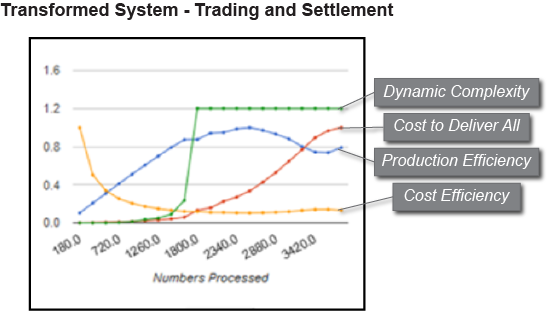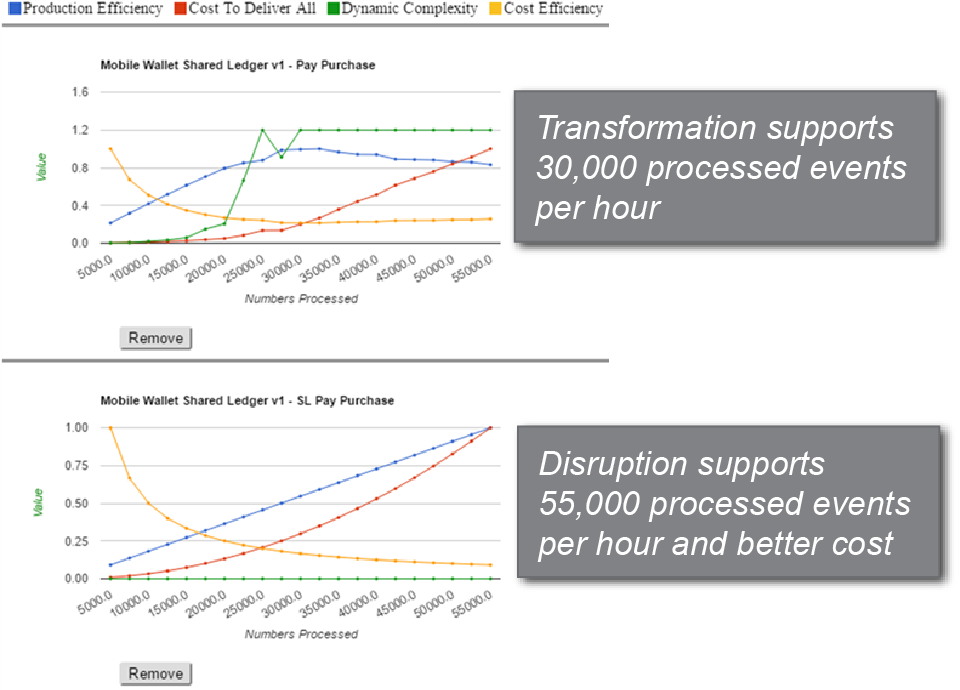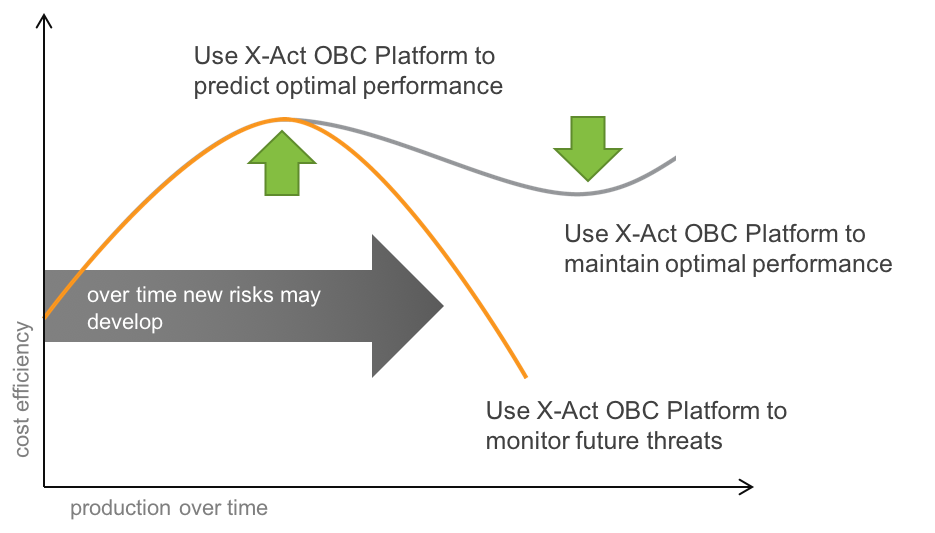If the predicted results of a proposed transformation are not aligned with business strategies and associated imperatives, it becomes clear that a disruption is needed to re-align the implementation with the business goals and objectives.
For example, if the business goal is to increase the customer base by 10X within an environment with limited scalability, improve the ability to absorb a financial crisis (such as the 2008 economic meltdown) or use an innovation (such as blockchain), then disruption may be the only feasible course.
In any case, the metrics offered through UDE will help management make the decision with full confidence in the outcome.






